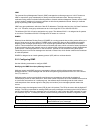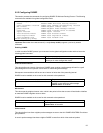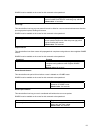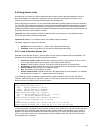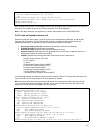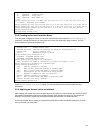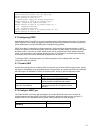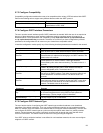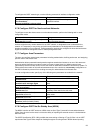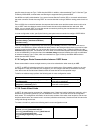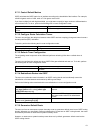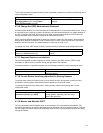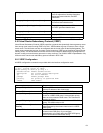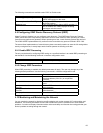
58
5.7.3 Configure Compatibility
Compatibility configuration enables the router to be compatible with a variety of RFCs that deal with OSPF.
Perform the following task to support many different features within the OSPF protocol.
Command Purpose
compatible rfc1583compatibility
Enable the router to be compatible with the
specifications in RFC 1583.
5.7.4 Configure OSPF Interface Parameters
The user can alter certain interface-specific OSPF parameters as needed. While the user is not required to
alter any of these parameters, some interface parameters must be consistent across all routers in an
attached network. Those parameters are controlled by the ip ospf hello-interval, ip ospf dead-interval,
and ip ospf authentication-key commands. Therefore, be sure that if you have configured any of these
parameters, the configurations for all routers on your network have compatible values.
In interface configuration mode, specify any of the following interface parameters as needed for the network.
Command Purpose
ip ospf cost
cost
Specify the cost of sending a packet on an OSPF interface. This cost
value is set to LSA’s* metric field and used for OSPF calculation.
ip ospf retransmit-interval
seconds
Specify the number of seconds between link state advertisement
retransmissions for adjacencies belonging to an OSPF interface. The
default value is 5 seconds.
ip ospf transmit-delay
seconds
Set the estimated number of seconds it takes to transmit a link state
update packet on an OSPF interface. LSA’s age should be
incremented by this value when transmitting. The default value is 1
seconds.
ip ospf priority number
Set priority to help determine the OSPF designated router for a
network. By setting a higher value, router will be more likely to
become designated router. The default value is 1.
ip ospf hello-interval
seconds
Specify the length of time, in seconds, between the hello packets that
are sent on an OSPF interface. This value must be the same for all
routers attached to a common network. The default value is 10
seconds.
ip ospf dead-interval
seconds
Set the number of seconds that a device's hello packets must not
have been seen before its neighbors declare the OSPF router down.
This value must be the same for all routers attached to a common
network. The default value is 40 seconds.
* Link State Advertisement
Command Purpose
ip ospf authentication-key
key
Assign a specific password to be used by neighboring OSPF routers
on a network segment that is using OSPF's simple password
authentication. The key length is up to 8 characters.
ip ospf message-digest -key
keyed md5 key
Set an OSPF MD5 authentication key for cryptographic password.
The key length is up to 16 characters.
5.7.5 Configure OSPF Network Type
The user has the choice of configuring the OSPF network type as either broadcast or non-broadcast,
regardless of the default media type. They can configure broadcast networks as non-broadcast networks
when, for example, there are routers in the network that do not support multicast addressing. The user also
can configure the OSPF network type as a point-to-multipoint network when there is a partially meshed
network. Routing between two routers not directly connected will go through the router that has virtual
circuits to both routers. This feature saves the user from having to configure neighbors.
If an OSPF point-to-multipoint interface is not defined in non-broadcast networks, the user must configure
neighbors on OSPF network.



